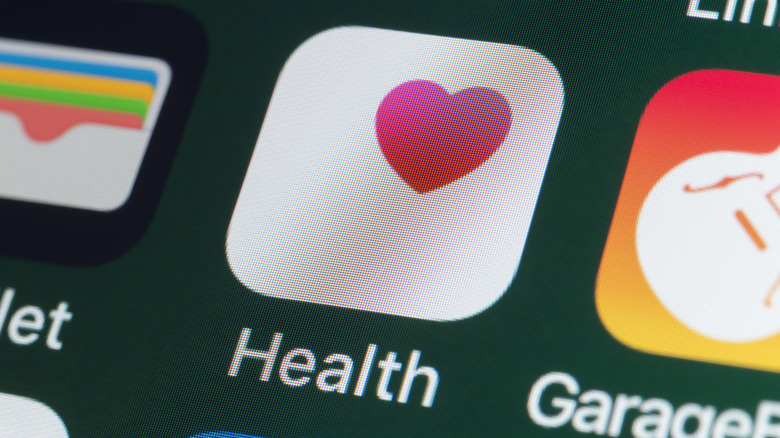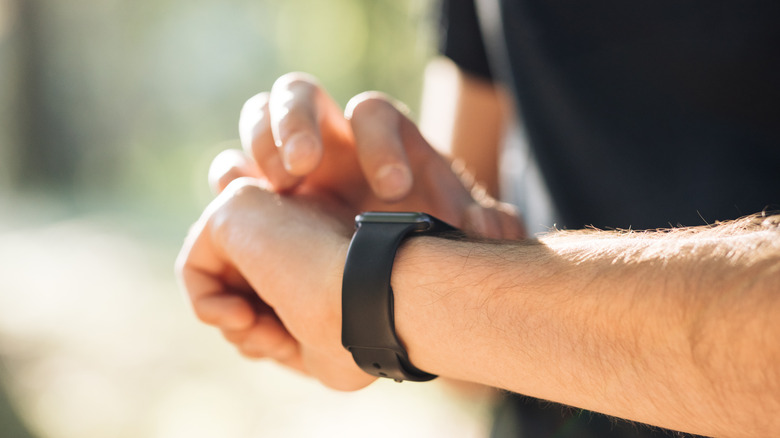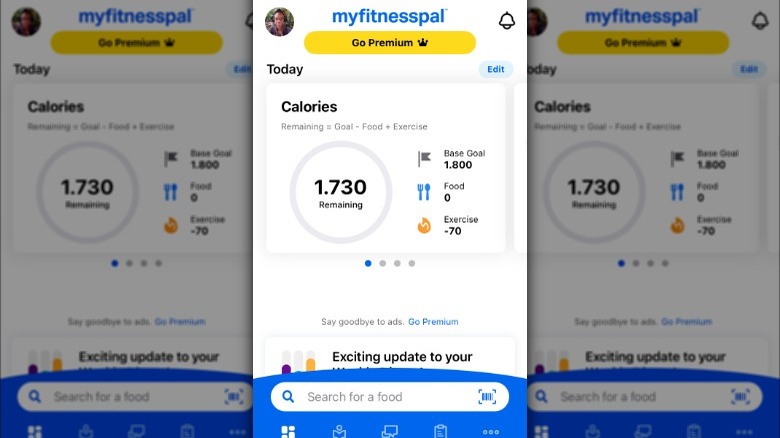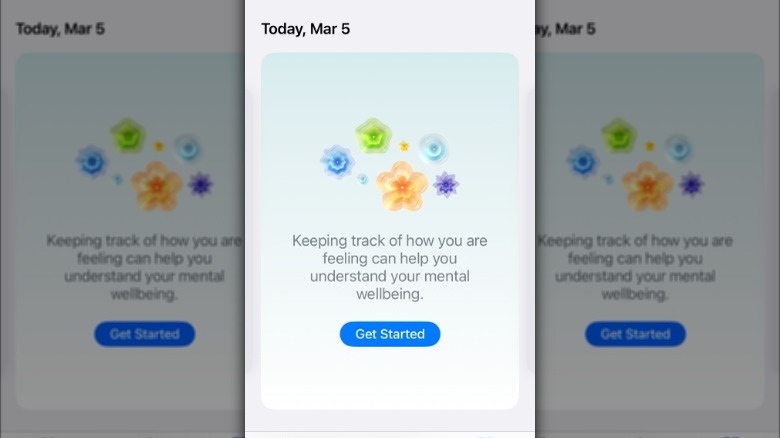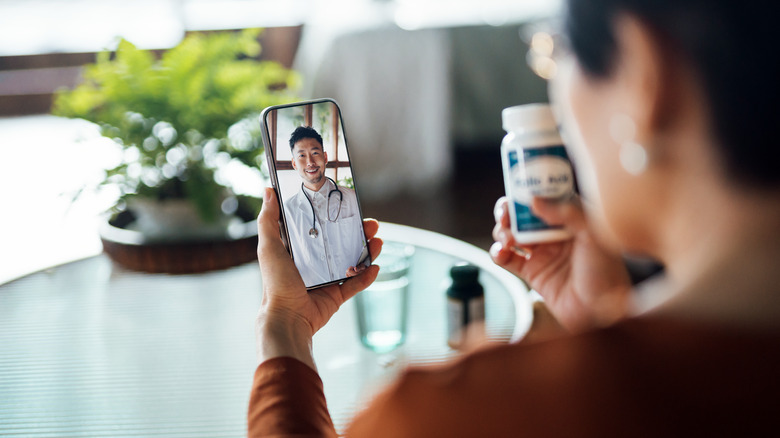5 Ways You Can Keep Up With Your Health On Your iPhone In 2024
Most of us want to improve our health, but that's often easier said than done. You may begin the new year with a resolution to get in shape and download some of the best workout apps on iPhone to help you get the job done. However, after a few months, there's a good chance many of your good intentions have gone out the window. With the demands of day-to-day life, it happens easily enough. You forget about those shiny new apps on that highly-rated iPhone 15 you recently bought and fall into your old habits.
This routine plays out for many of us year after year, but it isn't inevitable. Your iPhone can be your biggest ally in getting and staying healthy. It's packed with features that can keep you motivated, track your progress, and help keep you going for the long haul. While the iPhone offers a lot on its own, you can pair it with wearable devices and third-party apps to take your health journey to the next level.
Use the Apple Health app
The Apple Health app is the best place to get started in your quest to keep up with your health this year. It's loaded with features you can use to monitor almost every aspect of your health. Since pedometers went mainstream in the 1990s, tracking daily step counts has been one of the go-to metrics for those wanting to improve their health. We've come a long way since the days of those early devices, with the likes of Apple Watch and Fitbit turning step-counting into a national pastime. However, even without those wearables, you can use your iPhone to track your steps.
You will have to keep your iPhone on your person as you move around throughout the day to gather the most accurate information, but given how much time most of us spend with our phones, that shouldn't be too hard to do. Besides tracking your steps, you can manually enter your health data into various categories on the Health app, including body measurements, sleep, nutrition intake, and results from health checks, like blood pressure readings.
Apple recognizes that your mental health is just as important as your physical health and has made it easy to log your moods and take mental health assessments in the Health app so you can stay on top of your emotional well-being, too.
Use wearable tech for real-time health monitoring
While you can get a lot out of the Health app without using a wearable, if you own an Apple Watch, you can get even more insights based on real-time data. According to our testing, the Apple Watch Series 9 is one of the best smartwatches on the market, and if you're an iPhone owner with a wearable device, there's a good chance it belongs to the Apple Watch family, and with good reason.
No wearable integrates into the iPhone ecosystem better than the Apple Watch; they were designed to work together. You can use your Apple Watch to track your activity, including counting your steps, walking, and running distances. You can also use it to track and monitor your sleep patterns.
We all know how important heart health is. Apple gives you the tools to keep an eye on one of your body's most important organs with its heart rate tracking and ECG app, which lets you perform an electrocardiogram to check for atrial fibrillation. When you sync your Apple Watch with your iPhone, you can access all this data through the Health app on your iPhone, making it easy to keep up with all of your stats.
Nutrition and diet management
While the Health app has a nutrition tile where you can manually input information about your food intake, your best bet is downloading a third-party app to help you track this information. There are many outstanding iPhone apps for counting calories and nutrition that you can sync with the Health app to keep track of all of your micronutrients and macronutrients in one place. The app you choose will depend on your lifestyle and goals.
The MyFitnessPal app is an excellent choice if you're looking for an easy way to keep track of your calories. It has a huge database of foods, so you won't have to figure out on your own how many calories are in the slice of cheddar cheese you're thinking about putting on your burger.
You can store your favorite recipes along with their calorie counts, follow friends, and join communities of like-minded people to help keep you motivated along your fitness journey. MyFitness Pal integrates well with the Apple Health app, has a clean user interface, and does what it's supposed to do — help you keep tabs on your calories and nutrition. You can do all of that with the free version of the app.
If you feel like you need a more guided approach to nutrition and diet management and are willing to pay, an app like Noom is an alternative to MyFtiness Pal worth considering. With Noom, you get a coach and a more personalized approach to weight loss. Like with MyFitness Pal, you can connect Noom to the Health app.
Manage stress and mental well-being
Keeping your stress under control and taking care of your mental health can go a long way toward helping you maintain a healthy lifestyle. We've already mentioned that you can track your moods with the Apple Health app. You can also use your iPhone to gauge your anxiety and depression levels by taking standardized mental health assessments to gain insight into your mental health.
After you've completed these assessments and reviewed your results, you can think about the next steps, which may include talking to a mental health professional or using third-party apps that integrate with the Health app to help you reach your goals.
The app store has several apps aimed at promoting mindfulness and mental health. Once you download a compatible app, it'll prompt you to save information to Apple Health. From there, you can monitor activities like meditation within the Health app. Calm is one of the most popular meditation apps in the App Store. When you first open the Calm app, it'll ask about your goals, such as reducing stress, increasing happiness, and getting better sleep.
After that, it'll prompt you to sign up using your email address, Gmail, or Facebook. You can then use the 7-day trial to get a feel for the app, and if you like it, after the trial is over, you can pay $14.99 per month or $69.99 per year. The app uses visual and audio aids to help you relax and guided meditation, including the "Daily Calm" and the "Masterclasses" to help you improve areas like sleep, work, and concentration. You can sync it to the Health App to save your sleep and meditation sessions.
Take advantage of telehealth services
Healthcare has changed a lot over the past couple of years, with telehealth services changing how we interact with doctors and other healthcare professionals. Instead of traveling to a doctor's office in a non-emergency situation, you can manage many of your healthcare needs, including chronic conditions, and follow up with healthcare providers using your iPhone. You'll need to verify that your insurance provider covers telehealth services before you start using it on your iPhone.
Once you've got the go-ahead, download the app your healthcare provider uses to connect to their telehealth platform. After setting up the app, you'll be able to schedule appointments and attend virtual consultations. Depending on the app, your doctor may be able to monitor things like your blood pressure or blood sugar levels remotely. You can also keep track of your documents in the Apple Health App under the clinical documents section. If your doctor prescribes medications, you can set up medication reminders to help you remember to take them on time.

